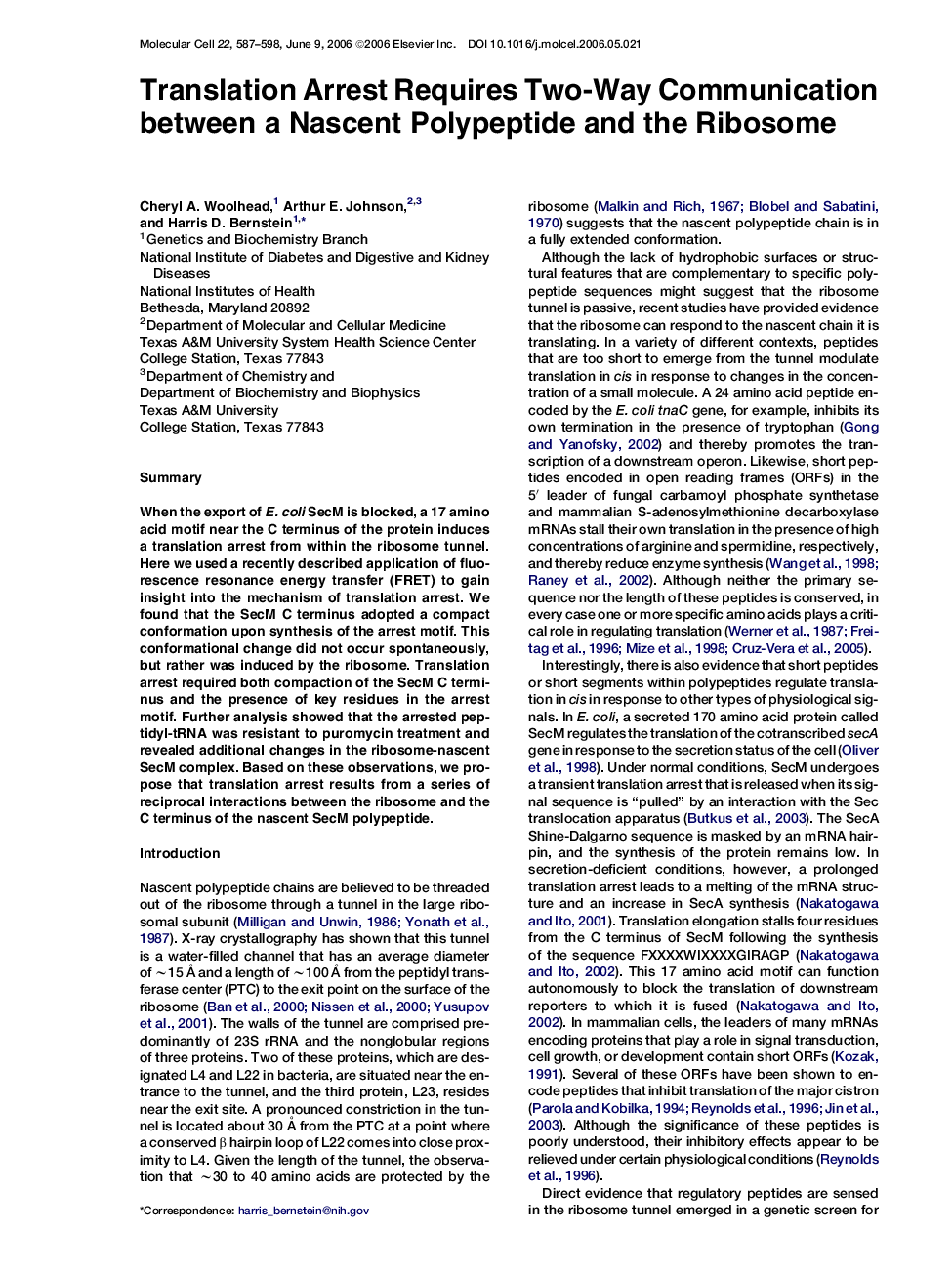| Article ID | Journal | Published Year | Pages | File Type |
|---|---|---|---|---|
| 1997782 | Molecular Cell | 2006 | 12 Pages |
SummaryWhen the export of E. coli SecM is blocked, a 17 amino acid motif near the C terminus of the protein induces a translation arrest from within the ribosome tunnel. Here we used a recently described application of fluorescence resonance energy transfer (FRET) to gain insight into the mechanism of translation arrest. We found that the SecM C terminus adopted a compact conformation upon synthesis of the arrest motif. This conformational change did not occur spontaneously, but rather was induced by the ribosome. Translation arrest required both compaction of the SecM C terminus and the presence of key residues in the arrest motif. Further analysis showed that the arrested peptidyl-tRNA was resistant to puromycin treatment and revealed additional changes in the ribosome-nascent SecM complex. Based on these observations, we propose that translation arrest results from a series of reciprocal interactions between the ribosome and the C terminus of the nascent SecM polypeptide.
